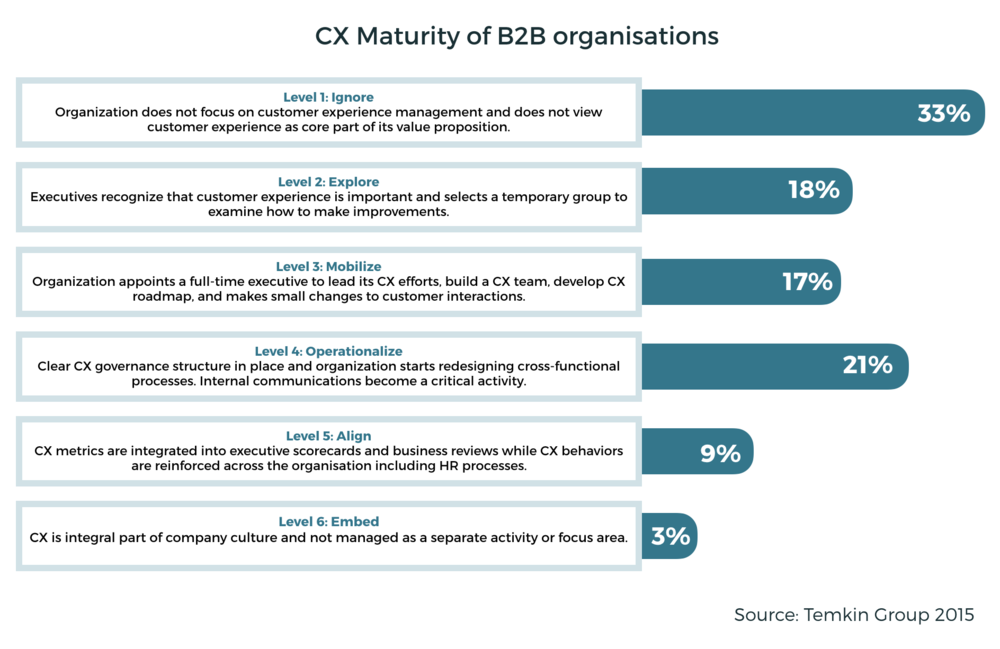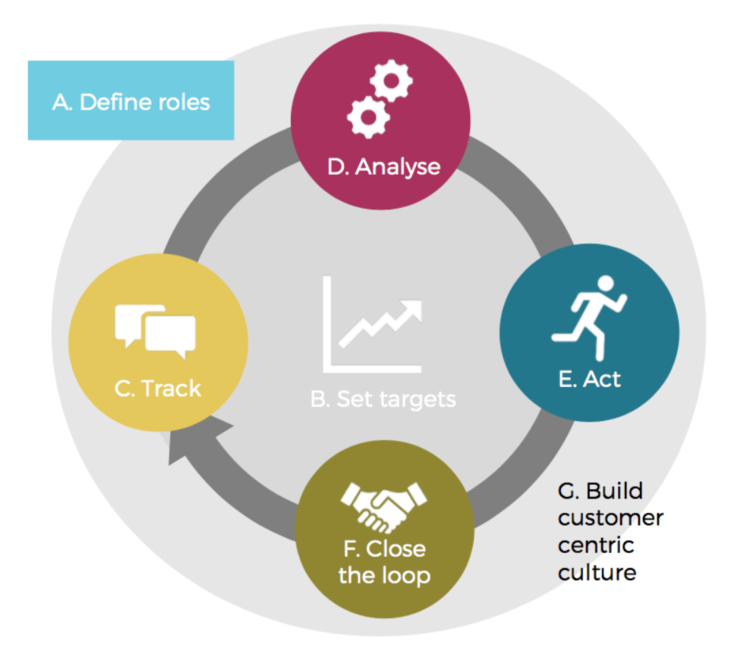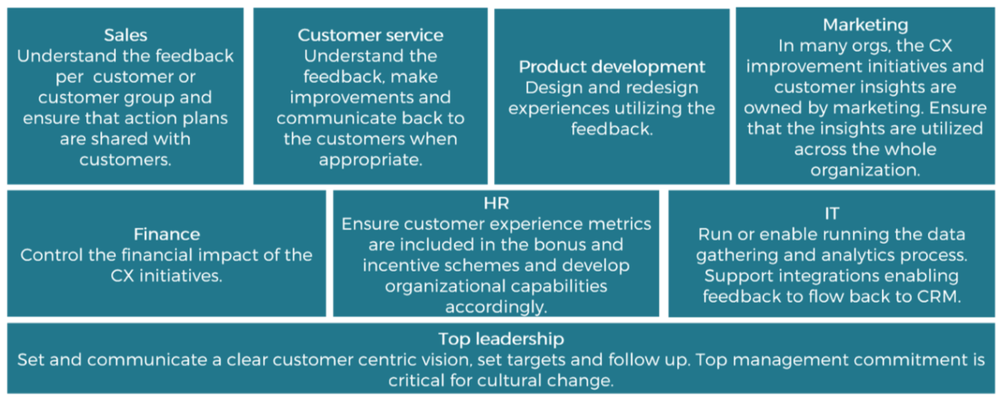5 Trends In B2B Customer Experience Management

Last updated on September 26, 2022
“Customer experience” could be undoubtedly named one of the buzzword terms of this decade. And I am absolutely certain that this trend will continue. Whether you’re working in a business-to-consumer (B2C) or a business-to-business (B2B) company, you should start paying attention to the way you create B2C and B2B customer experiences immediately, if you haven’t done so already.
At least 80% of B2B buyers now expect the same buying experience as B2C customers. After all, the business people you’re dealing with at work are the same who are ordering goods from Amazon in their free time. B2C customer experiences have set the tone of CX transformation. All the people, who receive advanced personalized customer treatment as individual consumers, come to work and… very often experience the same old “traditional” system that has always been there. Instead of an online catalog, they have to download a pdf or even order a paper brochure. Instead of an option to “order in three clicks”, they have to call. Does this sound familiar?
What does that mean to you?
Customers expect digital services and self-service options to be available and be not just good, but super slick. They want options that will help them to manage their own business. That leaves you no option but to transform your business to address today’s upgraded customer expectations.
SO, WHAT IS ACTUALLY HAPPENING TO B2B CUSTOMER EXPERIENCES?

Previously, many B2B companies simply ignored customer experience management completely. In 2015, only 3% of B2B companies prioritized customer experience as an integral part of company culture.
LUCKILY, THINGS HAVE CHANGED.
This year, Forrester predicts that B2B firms will move away from “just selling” and will instead focus on customer experience management. For a growing number of B2B companies, the pathway to growth will be through CEM.
Many B2C CX practices have become universal. “Digital” has become a standard not only for B2C customer interactions but also for B2B customer experiences. As have omnichannel communications and personalization.
Now, at least 89% of companies expect to compete mostly on the basis of customer experience, versus 36% in 2012. Customer Experience is the new black!
So, what are the trends within B2B customer experience management in 2019?
1. Voice of the Customer (VoC)
Voice of the customer refers to customers’ feedback about their experiences with and expectations for your products or services. Right now, businesses have more VoC data than ever – it comes in the form of user behavior data, recorded phone conversations between your frontline staff and your customers, direct customer feedback, discussions on social media, and even more, largely depending on your business.
To use Voice of the Customer to improve your business it is important to not only gather the customers’ feedback but also to analyze it and most importantly, act on the insights generated.

2. Make “customer-centric” your new business strategy
According to the customer experience statistics, 79% of employees in CX leading companies are engaged, compared with 49% in the companies whose CX is below average. Who in your organization owns the customer experience? It could be your customer experience team, it could be the top management… In fact, all the departments should work together to influence the customer experience.
Many businesses are participating in a customer experience race to see whose cx is the latest and the greatest. Not many of them understand that the customer experience race is not a sprint, but a marathon. It requires thoroughly planned preparation, and a long-term view and needs everyone in the organization to be on board. If you want to bring the voice of the customer into your organization, recruit a cross-functional team and consistently work on understanding the needs of your customers.

Above, you can see the roles that all functions within an organization should play in customer experience management. As you can see, everyone should be responsible for the customer experience!
3. Plan your communication
Good communication will attract new customers and improve the brand image and reputation of your company, whereas bad communication could be the reason your customer moves away from you.
The difference with regards to B2B organizations is that you are communicating both “company-to-company” and “individual-to-individual” all at once. It is worth noting that many B2B relationships are strong due to their longevity and recurring sales and interactions.
Your communications should focus on:
-
Conveying interest and a friendly and personal attitude
-
Consistent follow-ups
-
Understanding and listening to customer problems and needs
-
The right amount of correspondence and status updates
-
Thorough and clear explanations
-
Responsiveness
-
Conveying availability
4. Omnichannel
Omnichannel communication is definitely a megatrend in the customer experience sphere. Simply put, it’s about being available to your customer across every channel. Omnichannel offers a consistent, personalized experience for consumers across all channels and devices, with the main goal to make the customer journey as easy as possible. That means consistent engagement no matter where or how they interact with you.
>
“In most cases, B2B buyers research online even if buying offline later. […] At the same time online channels are beginning to overtake more traditional buying channels”
Currently, B2C experiences set the tone for B2B experiences. B2B customers want to have the ease and functionality of online B2C purchases and when they find that, that’s where they will take their business. In the recent study by Forrester, “Building The B2B Omni-Channel Commerce Platform Of The Future” it was discovered that almost three-quarters of B2B buyers consider the ability to look up product information across any channel to be important or very important when making work-related purchases online.
Talking about omnichannel communication, we don’t simply mean “to exist in all possible online channels”. It’s much more than that. Digital is just another channel to the customer. A truly customer-centric approach embraces the customer at all touchpoints in their journey.
5. Personalization
When creating the B2B customer experience, you need to target a personalized experience. In the competitive B2B market, where the sales cycle is much longer and usually involves direct communication, the customer experience should be personalized as much as possible. Gartner predicted that by 2018, B2B companies with e-commerce personalization would outsell competitors, who were not providing a personalized experience, by 30%.
>
“Personalization is a necessity to survive and thrive in the era of the empowered customer.”
Understand that each customer and each experience is going to be different and embrace it. We are entering the era of hyper-personalization.
Get a bonus 6th trend together with new stats in this guide to B2B customer experience!
Conclusion
The era of doing B2B business “the old-fashioned” way is gone. Now customers expect a high level of involvement and really high-quality digital services when making a B2B purchase. The differences between B2C and B2B are blurred, as customers are eager to have the same smooth modern experience in all areas of their lives, including their work lives.
In order to stay on top of the competition, companies need to deliver personalized omnichannel experiences that are tailored to unique buyers.
